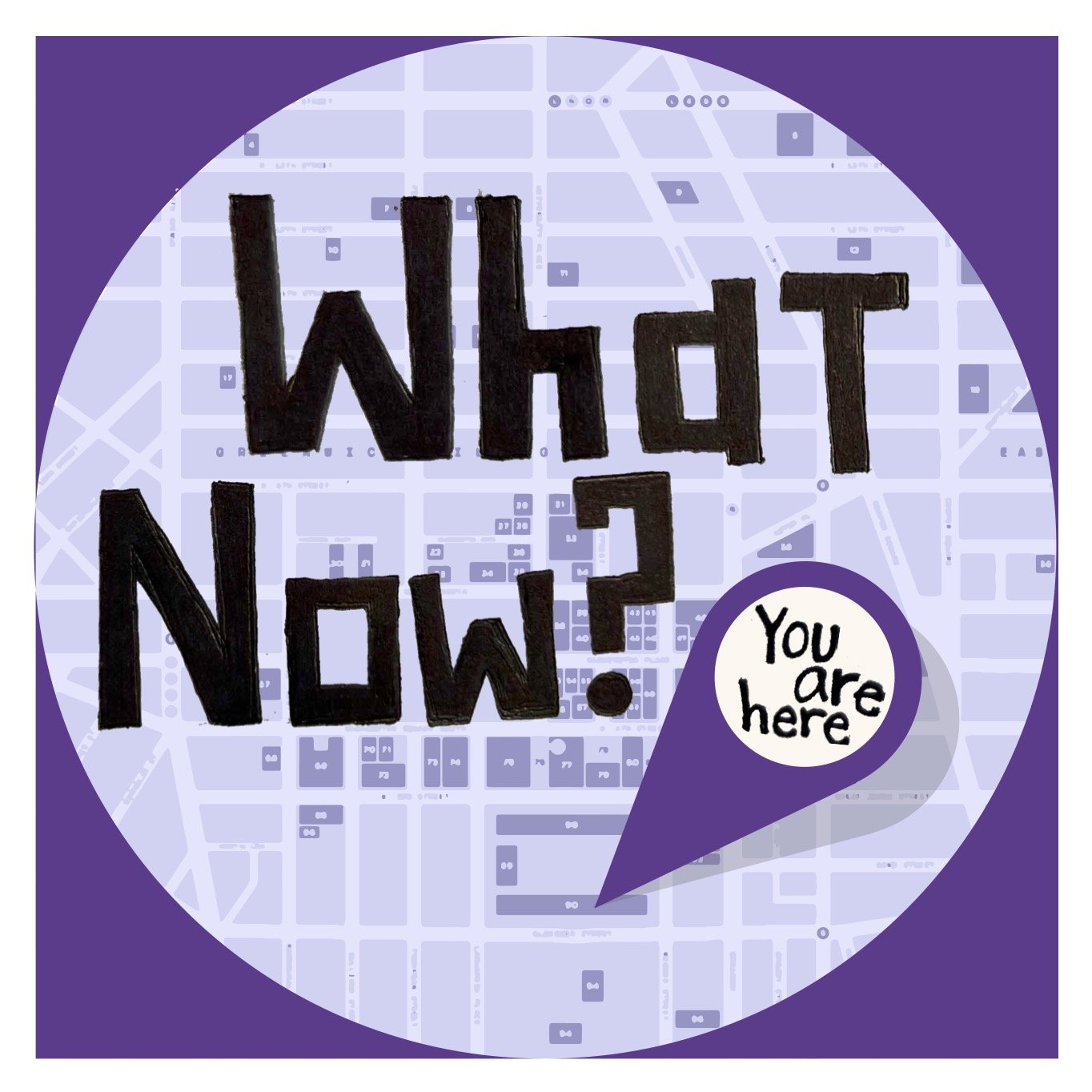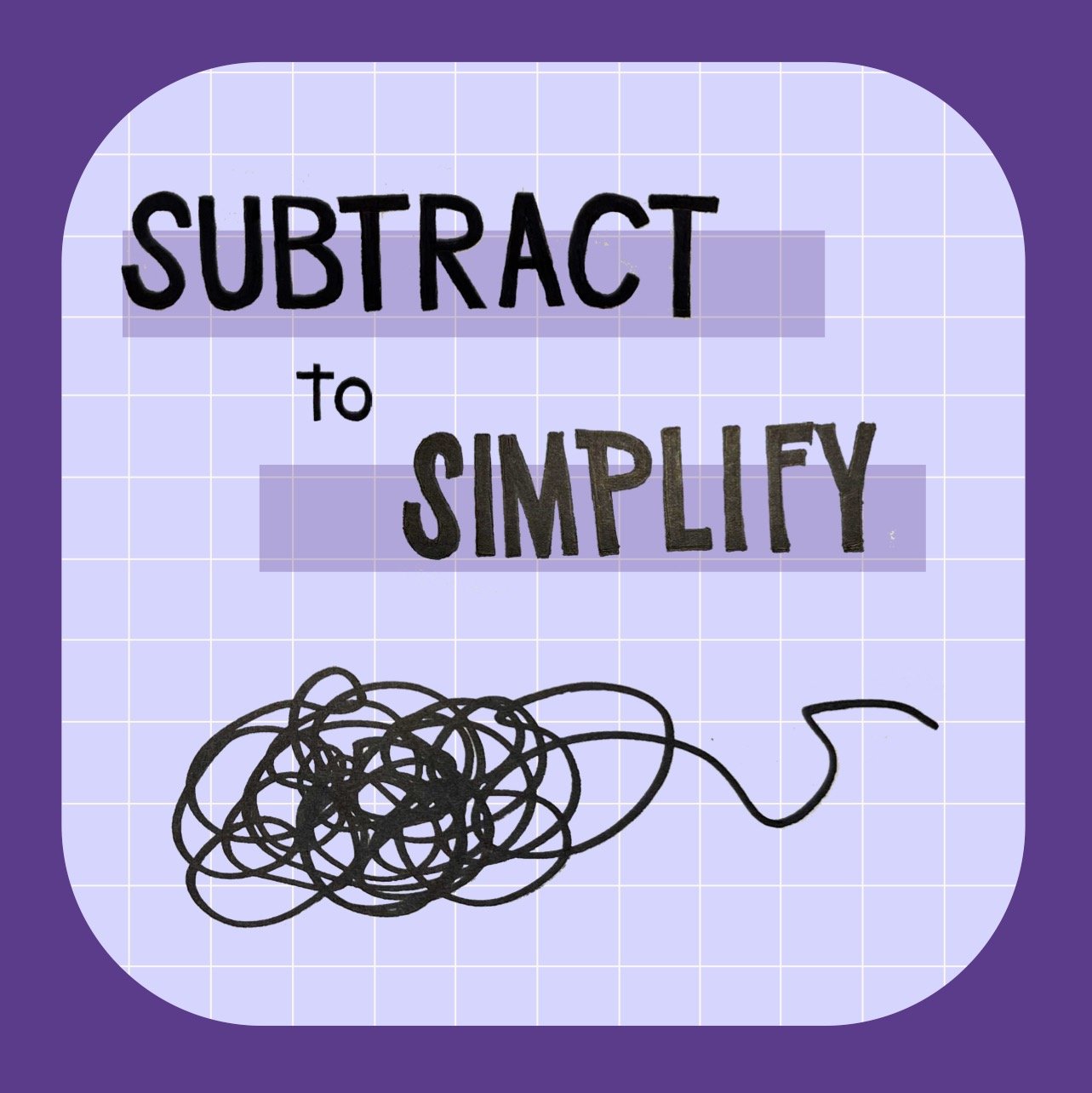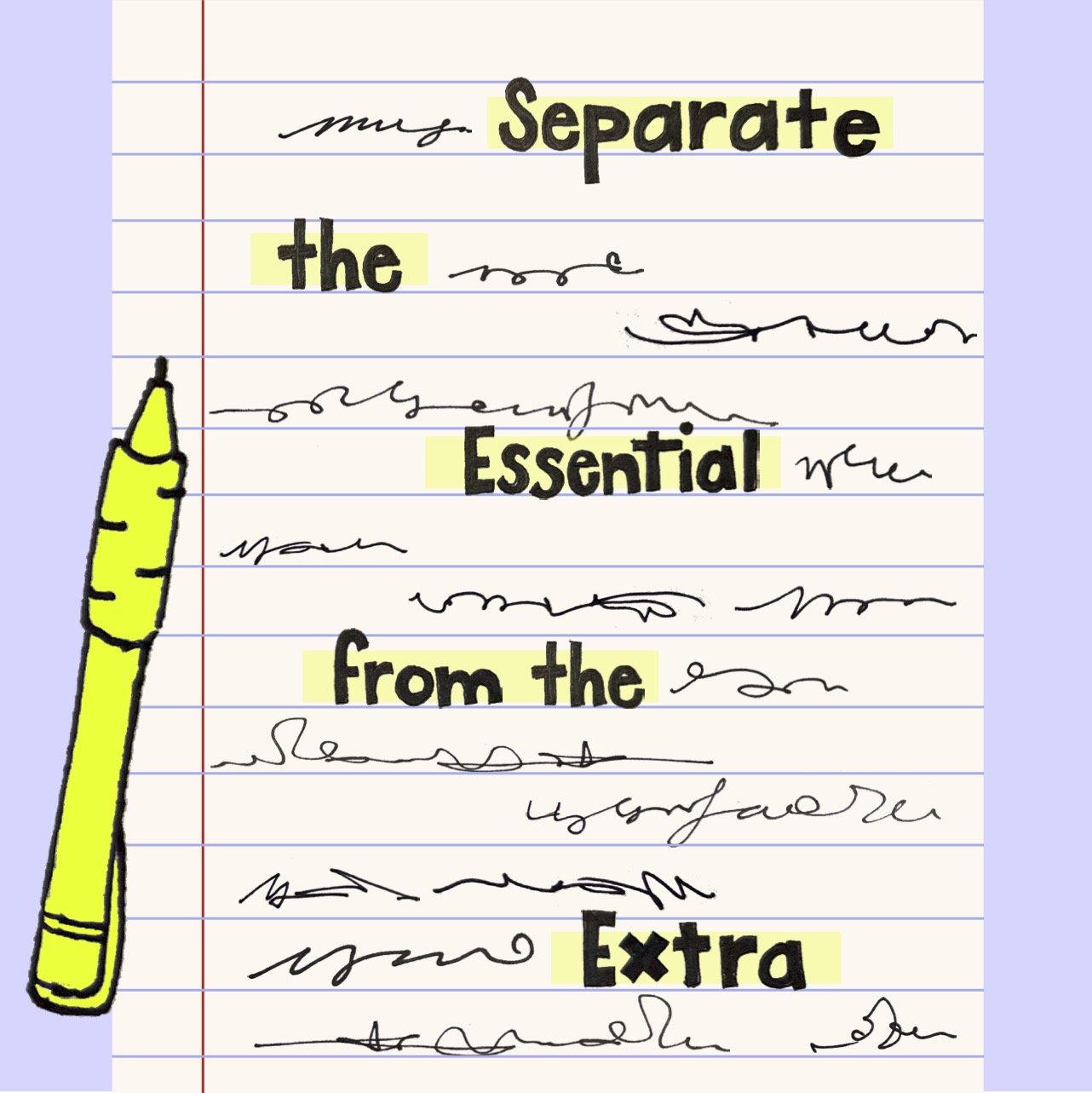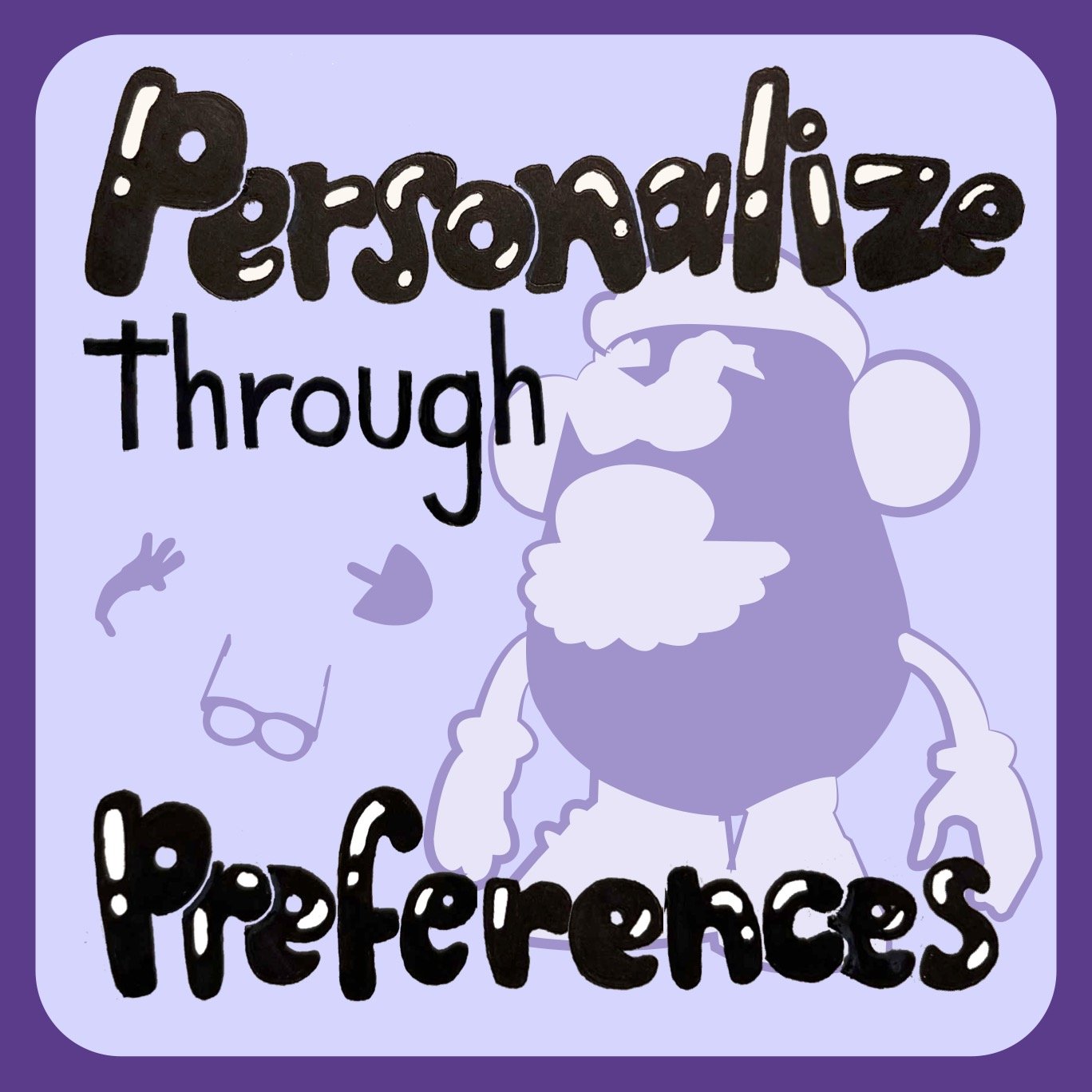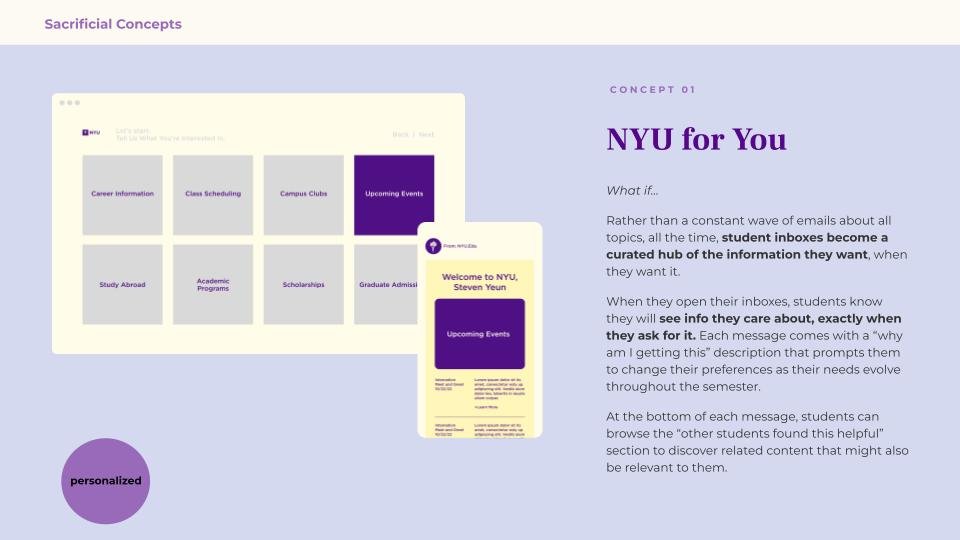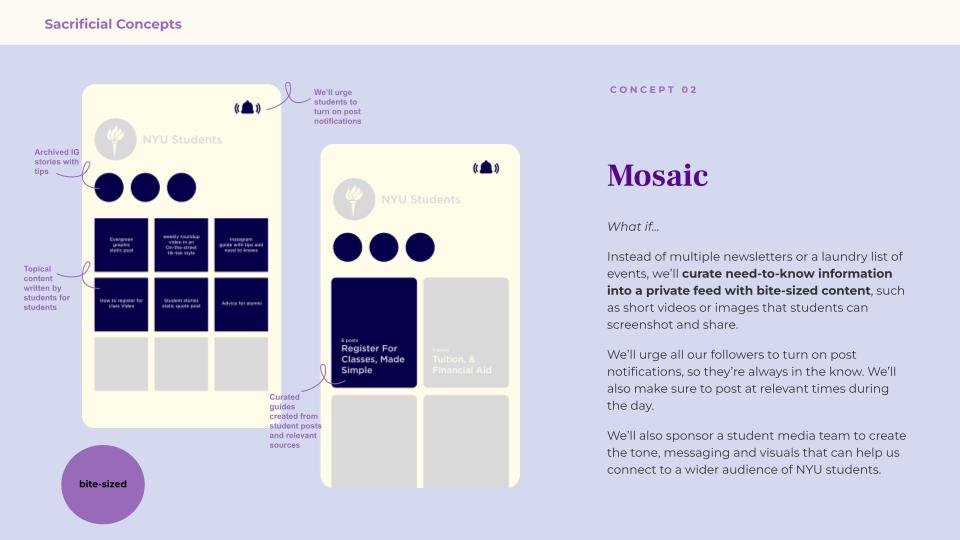NYU Beacon
NYU Beacon
How might we communicate the most critical, need-to-know information for first year students in the first semester of school after orientation ends?
The continuation of the initial NYU Student Experience project.
We revisited NYU to follow up on the initial research phase, exploring ways to enhance the student experience for a new generation of students. Focusing on insights gathered, we honed in on two journey map moments: "Where am I?" and "I need help!" The Beacon project targeted the overwhelm students experience by providing specific information when needed. This initiative also introduced new collaborative methods for NYU, preparing them for future cross-departmental collaborations and beacon projects. Our key questions were: "How can we reduce the cognitive load in navigating NYU's technologies?" and "How can we better coordinate tools among staff and faculty to enhance cohesion and reduce redundancy for students?"
The Beacon project allowed us to delve into the prototyping and iteration process, designing tangible digital solutions impacting NYU students directly. Collaborating extensively with NYU stakeholders, including students, faculty, staff, and administrators, this project served as an opportunity to leverage design for organizational transformation.
Phase 1: Sacrificial Concepts
We created prototypes based on the needs and desires of NYU students during their first year. Developing five sacrificial concepts aligned with the current generation of college students' preferences, we aimed to gauge receptiveness among students and administrators. Co-design sessions with students and administrators involved avoiding logistical discussions while reviewing these concepts.
During these sessions, it became evident that students craved relevant information delivered in a quick and bite-sized manner. The mosaic, updating daily with new posts and information, and the violet chat, sending event reminders and anticipatory messages, resonated with students. Administrators were most receptive to the Top 10 concept for its personalized approach based on students' likely questions. With these insights, we were prepared to deliberate and build the next iteration of concepts.
Our beacon project centered on the university's communication and technology strategies. Building on previous feedback, students expressed feeling overwhelmed by the volume of information from the university. The influx of automatic subscriptions, irrelevant emails, and unhelpful school-sanctioned apps/sites created a "tsunami of services." Consequently, students became disillusioned and chose not to navigate through the overwhelming amount of information. This led to a disconnection from school events, relevant resources, and an overall sense of not being supported.
Phase 2: Prototypes
The next concept iteration introduced an Integrated Calendar, Feed Builder, and Starter Pack. I facilitated two in-person co-design sessions, reaching out to previous volunteers from the sacrificial concepts session and including students from Stern’s Design Thinking Professor, Ashish Bhatia.
In the subsequent sessions, we had admin facilitate rather than participate, allowing students to fully engage in marking up sheets and building prototypes. The collaborative dynamics between students and admin contribute to the project's "Ways of Working" aspect, fostering more cohesive teamwork.
Students expressed high receptivity to the concepts, particularly appreciating the Integrated Calendar and the points-based system in the NYU Starter Pack. They valued an online space for organizing academic lives and bite-sized incentives for exploring the campus.
With these insights, we were prepared to finalize our concept.
Phase 3: Beacon Final
Our final concept, NYU Backpack, offers a streamlined mobile experience that integrates organization, navigation, and task management. It serves as a mobile-first front door, enabling students to prioritize time-sensitive tasks, connect with essential services, and explore opportunities seamlessly. This concept amalgamates the three prototypes from the iteration, reimagining NYU Mobile and NYU Home as a unified experience accessible on both mobile and desktop. NYU Backpack focuses on administrative and social communications rather than academic purposes.
Students can customize priorities, explore resources, view organized calendar events, access their school wallet and credit information, connect with campus networks, and receive reminders about events and assignments.
Both students and faculty expressed enthusiasm for this concept. Beyond bringing it to life, NYU admin utilized this beacon project to strengthen plans for developing their own student-led design team.
Project Summary
Below are illustrated design opportunities that I illustrated so that NYU admin may remember the work we did together.
